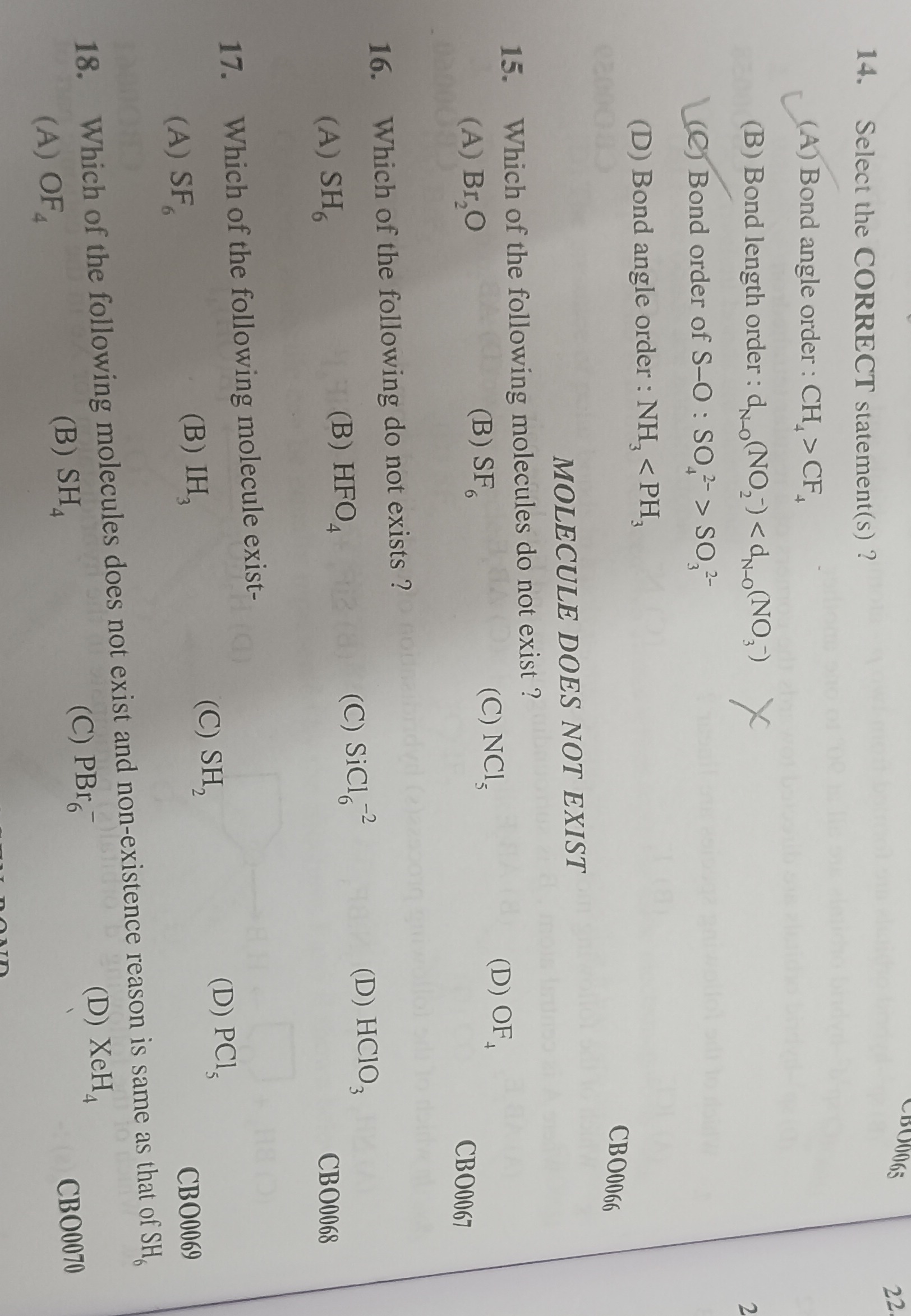Question
Question: Select the CORRECT statement(s) ?...
Select the CORRECT statement(s) ?

Bond angle order : CH4>CF4
Bond length order : dN−O(NO2−)<dN−O(NO3−)
Bond order of S-O : SO42−>SO32−
Bond angle order : NH3<PH3
(A), (B), and (C)
Solution
-
In CH4, the central atom is Carbon, and the surrounding atoms are Hydrogen. The bond angle is 109.5∘.
-
In CF4, the central atom is Carbon, and the surrounding atoms are Fluorine. Fluorine is more electronegative than Hydrogen.
-
When the electronegativity of the surrounding atoms increases, the bonding electron pairs are pulled further away from the central atom. This reduces the electron density in the bonding region near the central atom, leading to less repulsion between the bond pairs and thus a slightly smaller bond angle.
-
Therefore, the bond angle in CF4 (109.28∘) is slightly smaller than in CH4 (109.5∘). Statement (A) is CORRECT.
-
NO2− (Nitrite ion): It exhibits resonance with two equivalent N-O bonds. The average N-O bond order is 1.5 (one double bond and one single bond shared over two positions).
-
NO3− (Nitrate ion): It exhibits resonance with three equivalent N-O bonds. The average N-O bond order is 1.33 (one double bond and two single bonds shared over three positions).
-
Bond length is inversely proportional to bond order. Since the bond order of N-O in NO2− (1.5) is greater than in NO3− (1.33), the N-O bond length in NO2− will be shorter than in NO3−. Statement (B) is CORRECT.
-
SO42− (Sulfate ion): It exhibits resonance. To minimize formal charges, it is usually depicted with two S=O double bonds and two S-O single bonds. The average S-O bond order is 1.5 (6 bonds / 4 positions).
-
SO32− (Sulfite ion): It exhibits resonance. To minimize formal charges, it is usually depicted with one S=O double bond and two S-O single bonds, along with a lone pair on Sulfur. The average S-O bond order is 1.33 (4 bonds / 3 positions).
Since the bond order of S-O in SO42− (1.5) is greater than in SO32− (1.33), the statement is correct. Statement (C) is CORRECT.
-
NH3 (Ammonia): Central atom N (Period 2), 3 bond pairs, 1 lone pair. Hybridization sp3. Geometry trigonal pyramidal. Bond angle ≈107∘.
-
PH3 (Phosphine): Central atom P (Period 3), 3 bond pairs, 1 lone pair. Due to the larger size of P and its lower electronegativity compared to N, the s-p mixing is less significant (Drago's rule applies to some extent for heavier elements in the same group with H). The bond angle is closer to 90∘ (around 93.5∘).
Therefore, the bond angle in NH3 (107∘) is greater than in PH3 (93.5∘). Statement (D) is INCORRECT.
